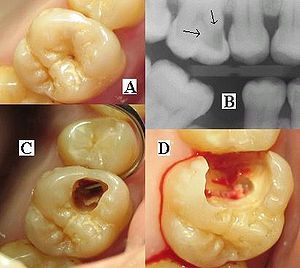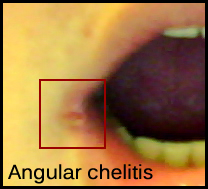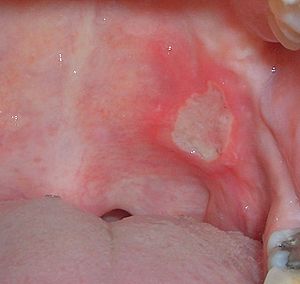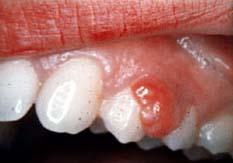Continue from section I…
Is there a way to link oral signs and symptoms to certain diseases?
In some diseases, there can be very specific oral health presentations or manifestations. In fact, there are times where the mouth is the first site to show signs of an underlying systemic condition, preceding clinical diagnosis by months. Hence it is important that if you noticed any sudden changes in your mouth that cannot be relate back or correspond to a known cause, it may be wise to monitor those changes. If the abnormal changes persist for weeks or become symptomatic, it is best to get it checked out by a dentist as soon as possible to prevent late diagnosis and complications.
Below is an outline of possible oral health problems or presentations under some of the common conditions or diseases of the body:
Pregnancy related oral health problems
-
Pregnancy gingivitis: Gum diseases are very common during this period and occurs in 50% of women due to hormonal and vascular changes.
- Pregnancy epulis, which is a localized raised gum swelling, occurs in 5% of pregnant women. It usually appears red and commonly found on the front region. These may bleed easily but generally not painful.
- Increased tooth mobility or loosening of the teeth.
- There may be increased risk of dental caries or tooth decays due to difficulty with oral hygiene and salivary changes.
- Dental erosion or loss of tooth structure due to external acids from severe reflux or vomiting.
Puberty related oral health problems
- Puberty gingivitis.
- Juvenile periodontitis is a disease that affects the supporting structures of the teeth associated with bone loss. These are often aggressive and can be difficult to treat.
Diabetes and common oral presentations or signs that could raise alarm bells for possible undiagnosed diabetes
-

Tooth decay
Increased incidence of tooth decay or dental caries due to secretion of glucose in saliva, which acts as great food source for oral bacteria
- Sudden onset of periodontal disease
- Poor healing response due to reduced immune system and vascular changes. There may also be limited or no response to dental treatment.
- Dry mouth or xerostomia which is associated with poor saliva production and increased secretion of glucose in saliva causing it to be stickier and more viscous
- Thickening of the gums
- Altered taste possibly due to changes in saliva which reduces ability to dissolve food and stimulate taste receptors
- Burning mouth syndrome which is a painful condition of the mouth associated with burning or scalding sensation on tongue, lips, cheeks or other oral structures
- Diabetic sialadenosis presented as painless, symmetrical enlargement of the parotid saliva glands, located on the side of the face and near the ears
- Infection prone, especially fungal related species such as candida albicans which gives rise to candidiasis or oral trush
Anemia related oral manifestions
-

Angular cheilitis on corner of the mouth
Atrophic glossitis, also known as balding of the tongue is presented with red smooth areas. This is especially true in anemic cases related to iron efficiency
- Secondary infection such as angular cheilitis, which is a painful condition involving candida albicans, leading to infection on the corners of the mouth. NB: This can be a common presentation in old people especially if drooling is a problem.
- Mucosal pallor or lack of color (redness) on the inner lining of the mouth
Leukemia related oral symptoms
- Gingival hypertrophy or hyperplasia which is gross overgrowth of gum tissues especially those formed that rapidly and bleed easily
- Prone to bruising of oral soft tissues
- Multiple and persistent ulcerations in the mouth
- Spontaneous hemorrhage
- Numb chin syndrome
- Gum diseases
- Mucositis is a condition characterized by painful inflammation of the inner lining of the mouth
Rheumatoid arthritis and related oral signs
- Pain in jaw joints with limited jaw movements making it difficult to eat or open mouth. NB: This must be differentiate to joint pain related to direct trauma or grinding
- Secondary Sjogren’s syndrome, another autoimmune disease of the salivary glands which is commonly associated with rheumatoid arthritis. Symptoms include persisting dry mouth and swollen salivary glands particularly on sides of face. Some people may find an increased need to continuously sip water throughout the day.
Cancer which can be primary (oral cancer) or secondary (cancer metastasize from other parts of the body) and its possible oral presentation
-

Oral ulceration
Persistent firm lumps which has grown overtime, especially the ones which are painless. These lumps may be fixed or mobile. NB: Lumps on the very middle of the palate and either side on the inside of lower jaw are usually harmless bony growths known as tori but a consultation with dental specialist is recommended to rule out cancer.
- Persistent ulcerations on the same site of the mouth, especially if they are big and deeper than usual. They can also have raised borders, which resembles a volcano dip and feels firm when palpated.
- Parasthesia or altered sensation in the mouth without related cause. Commonly present as tingling, prickling or burning sensation.

Amiable post and this mail helped me alot in my college assignement. Thank you as your information.
Pingback: Tweets that mention Oral Health: Relationship between the body and mouth II | Intelligent Dental -- Topsy.com